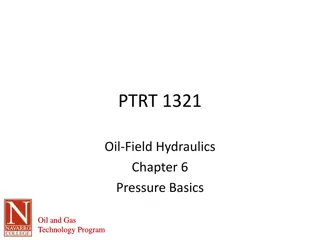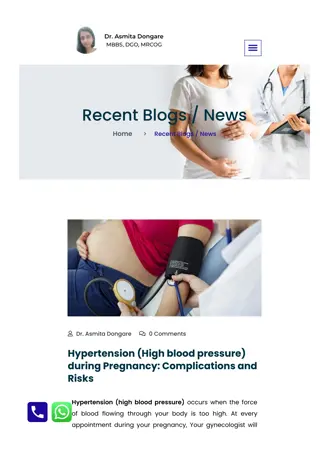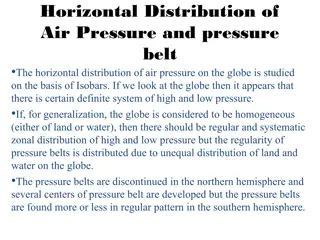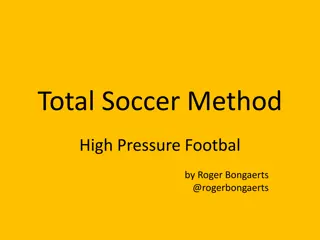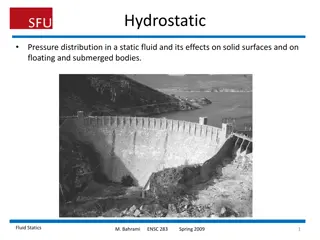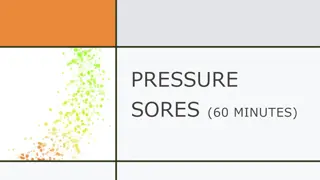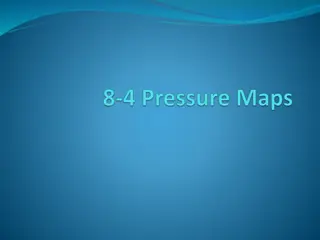Implementing HIPPS for High Integrity Pressure Protection System
Implementing High Integrity Pressure Protection System (HIPPS) is crucial for maintaining the safety and integrity of high-pressure pipelines. HIPPS helps prevent explosions by controlling pressure levels in the pipeline, especially when abnormal conditions occur. By using advanced technology and safety measures like SIL 3 standards, HIPPS ensures protection for both infrastructure and personnel in the oil and gas industry.
Download Presentation

Please find below an Image/Link to download the presentation.
The content on the website is provided AS IS for your information and personal use only. It may not be sold, licensed, or shared on other websites without obtaining consent from the author.If you encounter any issues during the download, it is possible that the publisher has removed the file from their server.
You are allowed to download the files provided on this website for personal or commercial use, subject to the condition that they are used lawfully. All files are the property of their respective owners.
The content on the website is provided AS IS for your information and personal use only. It may not be sold, licensed, or shared on other websites without obtaining consent from the author.
E N D
Presentation Transcript
Why HIPPS ?? We have 600# (high pressure bearing) pipeline from well pads till production header. After that, we have 150# (low pressure bearing) pipeline due to economy & usage purpose. Due to some abnormality, if high pressure reaches 150# pipeline, then it may cause explosion to pipeline & hence vessels in trains area.
Onsite Normal Operation (Without HIPPS): 107 psi FLOW High pressure Bearing Pipeline Low pressure Bearing Pipeline
If Pressure Increases High Pressure 136 psi FLOW High pressure Bearing Pipeline Low pressure Bearing Pipeline
WHAT IS HIPPS??? HIGH INTEGRITY PRESSURE PROTECTION SYSTEM
HIGH INTEGRITY Using 3 transmitters in downstream (works on 2oo3 logic).
PRESSURE PROTECTION Safety Integrity Level 3 High pressure from formation Back pressure from trains Pipe rating ( 600# to 150# )
STANDARD- International Electro Technical Commission (IEC) Functional Safety of Electrical/Electronic/Programmable Electronic Safety-related Systems IEC 61508 and IEC 61511 standards for design, implementation and management of safety systems. SIL (Safety Integrity Level ) - is a measurement of performance required. SIL 3 In accordance with IEC61508 and IEC61511 Low demand PFD-Frequency of demand of operation is < 1 per year 0.001-0.0001
Onsite Normal Operation (With HIPPS): LOGIC SOLVER 107 PSI 107 107 PSI 107 PSI 1 PSI
If pressure increases: LOGIC SOLVER 136 PSI 136 136 PSI 136 PSI 1 PSI
LOGIC SOLVER 136 PSI 136 PSI 136 PSI 1 PSI 136
TRANSMITTERS PSIT-2011 & 2021 for Upstream PSIT-2010 A/B/C & 2020 A/B/C for Downstream PSIT-201 & 202 for Lube Oil (All PSIT s are of ROSEMOUNT and Model of series 3051S)
PSIT-201 & 202 Set Point 1800 to 2700 psi Purpose To start/stop the pump
PSIT SPEIFICATIONS Type Diaphragm Seal type Maximum Temperature 80 C Minimum Temperature -40 C Diaphragm Material Hasteloy C 276 Fill Fluid Material Silicon Output Signal Type 4-20mA Digital Communication std HART Trip SP 135psi
XSV Specifications Type Ball Valve (Make- Valve Technologies) Size 30 Opening time Upto 30 minutes Closing time Upto 5 seconds Design Pressure 91.7 bar Design Temperature 130 C Failure Action Fail to close Hydraulic Oil used ISOVG46
TRIPS FOR HIPPS VALVES: 1. Downstream pressure of HIPPS: 2oo3 logic. 2. When the pressure of air purge to HIPPS panel falls below 0.15 mm of water column (gauge available in field). 3. Position feedback of the HIPPS valve (any one) not available when valves are in OPEN condition: After a time delay of 40 min, both the HIPPS valves will close.
START-UP CONDITIONS 1. Pressure difference between upstream & downstream PSIT must not exceed 2.5 bar. 2. Upstream pressure should not exceed 100psi.
MOTOR DETAILS Make Crompton Greaves Voltage 415v +/- 6% Type 3 AC Squirrel Cage Induction Motor Full Load Current 3.25 A Full Load Speed 1415 RPM
CONTINUE: 1300 PSI PRESSURE IS SUFFICIENT FOR KEEPING THE VALVE IN OPEN POSITION. Pump stops at 2700 PSI. If the circuit hydraulic pressure is < 1800 PSI - ONE AMONG THE TWO PUMPS WILL START. < 1400 PSI THEN BOTH THE RUNS WILL START AUTOMATICALLY.
PLC We have S7 400 PLC for HIPPS package & S7 200 PLC for hydraulic circuit. We are using two PLC s. One for each stream for production redundancy. PLC I/O s AI DI DO PSIT-2011/2021 Limit switch of XSV XSY 2010 A1-1/2, XSY 2010 B1-1/2, XSY 2010 A1-1/ 2, XSY 2010- B2- 1/2 PSIT-2010 A/B/C (ZSO/ZSC- 2010A/2010B) XSY 2020 A1-1/2, XSY 2020 B1-1/2, XSY 2020 A1-1/ 2, XSY 2020- B2- 1/2 PSIT-2020 A/B/C (ZSO/ZSC-2020A/2020B) Trip lamp, Fault lamp PSIT-201/202 Trip RESET, Fault RESET
Specifications of S7 400 PLC: 1. Modular PLC. 2. Handle large module. 3. Used where high processing speed & deterministic response time is required. 4. Used for data intensive tasks (data parallelism). 5. Have additional line monitoring diagnostic feature- generates alarm when wire breaks or short circuit.
Specifications of S7 200 PLC: 1. Shoebox PLC 2. Less Memory. 3. Handle small module 4. Cost effective.
PLC PURGING SYSTEM DETAILS Make Pepperl + Fuchs Model 3003-LPS-C1-YZ-VM Supply Instrument Air Overpressure Protection Breather Range 5.5-8.3 bar Temp. Range -29 to 50 C Purpose To remove & prevent flammable gas or vapor accumulation. Note: Before opening the HIPPS panel, the purge pressure low trip logic should be BYPASSED by making the trip BYPASS switch ON . (switch available near HIPPS panel).


